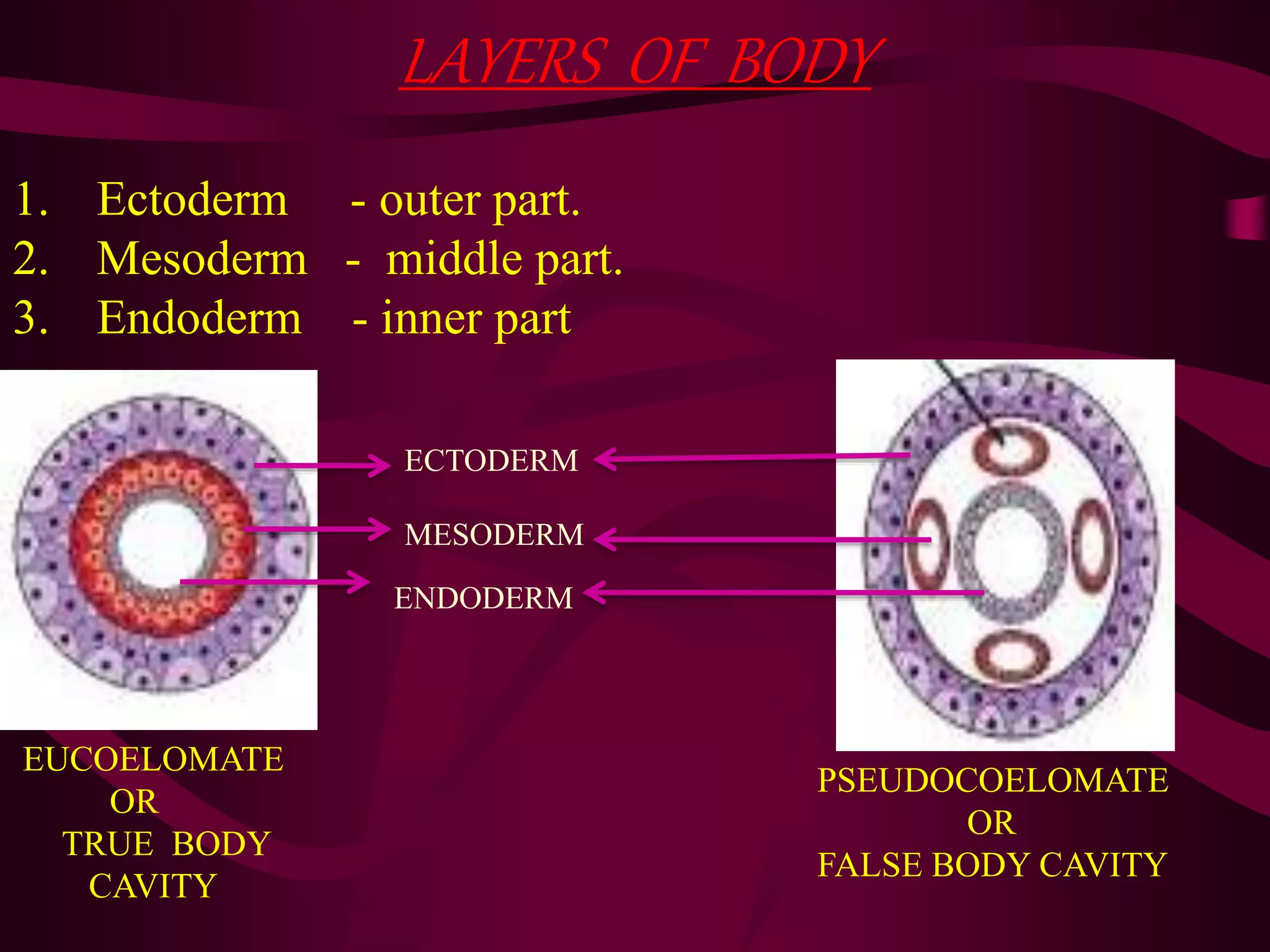The document describes the evolution of classification systems for living organisms from the original two kingdom system proposed by Linnaeus to the five kingdom system currently in use. It outlines the key characteristics used to classify organisms into the kingdoms of Monera, Protista, Fungi, Plantae, and Animalia. For each kingdom, it provides examples of phyla and details about their structures and traits. The hierarchical levels of classification from kingdom down to species are also defined.































































